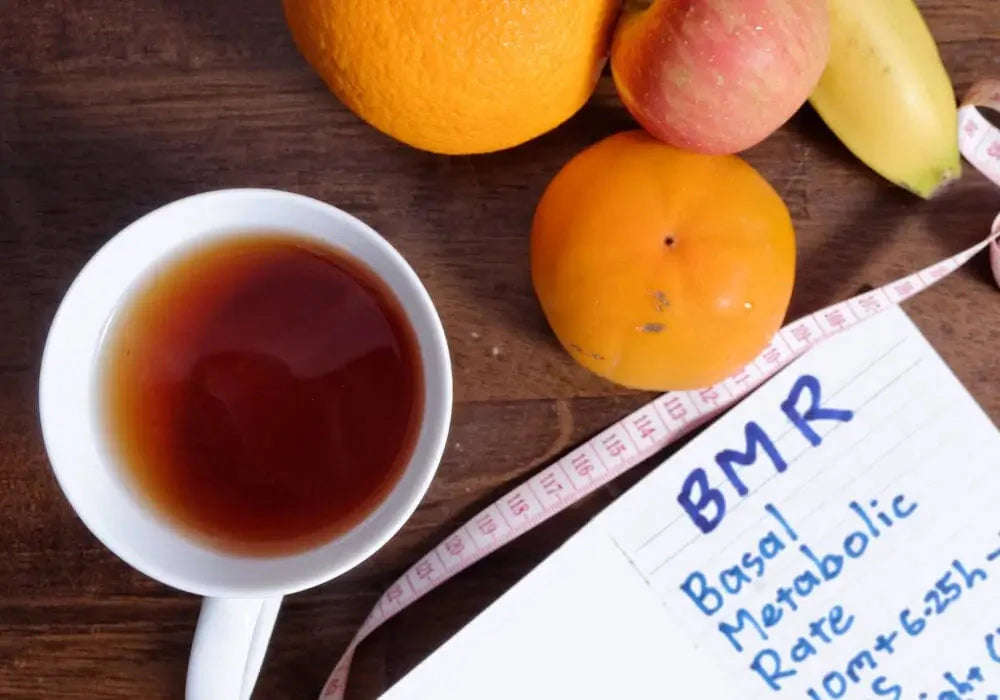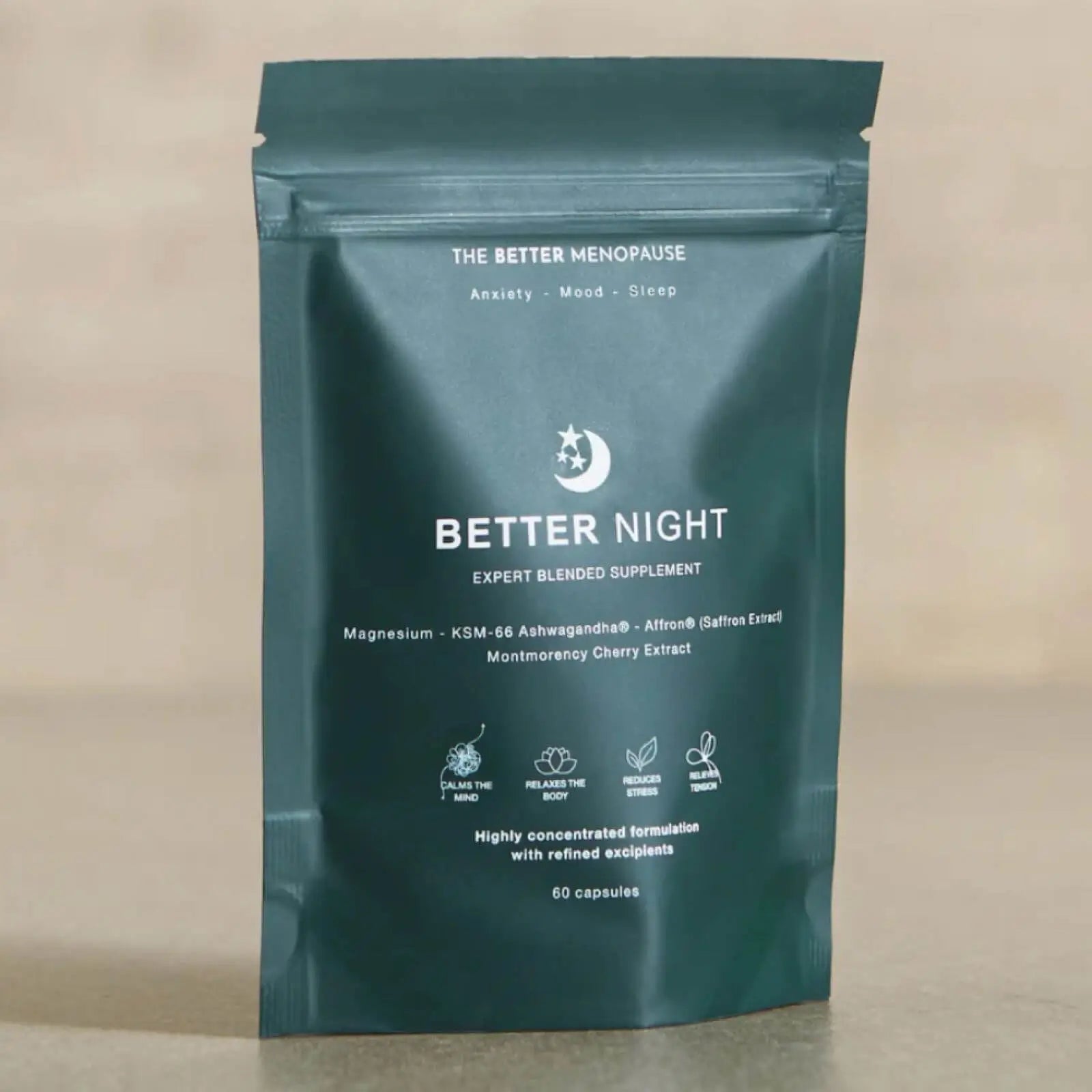
How menopause affects metabolism and how to improve yours
What is metabolism, how is it affected by menopause and how can you boost yours to improve your health?
When people use the word metabolism, they’re sometimes talking about basal metabolic rate and sometimes food metabolism. Here, we’ll explain both of these terms and explore how they’re linked to changes during menopause.
We’ll also look at what you can do to boost or improve your metabolism at this time of life.
Along the way, we’ll consider how reduced oestrogen levels during menopause can affect your metabolism, the role played by your gut microbiome and how all of this can impact your weight and your metabolic health.
What is metabolism?
We hear the word metabolism used all the time, especially in relation to body weight. But what does it actually mean?
In fact, metabolism can refer to two different processes – both of which have an impact on your weight, levels of body fat and overall health.
Metabolic rate
Metabolic rate, also known as basal metabolic rate (BMR), is the amount of energy, in calories, your body burns each day just to fuel vital processes like breathing, blood flow, digestion and brain function.
Metabolic rate doesn’t include physical activity but, importantly, it does include the calories your muscles use when resting. It accounts for around 60–80% of the total calories your body burns.
Metabolic rate is what many people mean when they talk about increasing or boosting your metabolism. Later in this article, we’ll look at ways you may be able to do this.
Having a lower metabolic rate can make it easier to put on weight in the form of body fat, and harder to lose it.
Food metabolism
Metabolism refers to the way your body processes food to extract the energy, protein, nutrients and other chemical compounds it needs to function.
Your gut microbiome – the community of bacteria and other microorganisms that live in your gut – plays an important part in metabolism, breaking down and transforming nutrients for use around your body.
How you metabolise food has an impact on several factors linked to your health and your weight, including:
- blood sugar levels
- levels of different blood fats, like cholesterol
- how well your body builds muscle
A part of your gut microbiome known as the estrobolome is responsible for metabolising oestrogen. That means the health and makeup of your gut microbiome can make a difference to the levels of oestrogen circulating around your body.
As we’ll explain later, you can improve your gut microbiome and your metabolism by eating a healthier diet.
Metabolic health and metabolic syndrome
One way of describing metabolic health is that it’s how effectively your metabolism process and make use of nutrients like sugar and fat from your diet.
Poor metabolic health is sometimes called metabolic syndrome. It increases your risk of developing metabolic conditions including heart disease, type 2 diabetes and stroke.
Definitions of metabolic syndrome can vary but it often means having three or more of the following symptoms:
- a large waist circumference or extra belly fat
- high blood pressure
- high blood sugar / insulin resistance
- high levels of blood fats called triglycerides
- low levels of ‘good’ (HDL) cholesterol
Recap
- Metabolism is the name for the processes that turn food into energy
- Metabolic rate is how fast your body uses that energy
- Metabolic health is how well your metabolism deals with sugar and fat from your food
- Metabolic syndrome is a collection of symptoms resulting from poor metabolic health
How does menopause affect metabolism?
Menopause is associated with several factors that can have a negative impact on both your metabolic rate and your metabolism.
As you get older, your body becomes less efficient at using the protein in your food to replenish muscle. Menopause may make this worse. Without the right lifestyle changes, you can lose muscle mass, reducing the calories you body burns at rest and slowing your metabolic rate.
Poor sleep, another common symptom of menopause, contributes to reduced muscle mass too, further lowering your metabolic rate.
Menopause is also linked to increased belly fat and to imbalances in your gut microbiome, both of which can lead to worse metabolic health.
Studies show that women who have been through menopause have, on average, higher blood pressure and blood sugar, increased insulin resistance and a greater risk of developing heart disease.
Does reduced oestrogen during menopause slow metabolism?
Reduced levels of the reproductive hormone oestrogen are an important factor in many common symptoms of perimenopause and menopause, including metabolic changes.
Low oestrogen is involved in several mechanisms that contribute to reduced muscle mass, the main cause of a slower metabolic rate.
Having less oestrogen also leads to increased belly fat during menopause, which is in turn linked to risk factors for metabolic health issues like high blood sugar and blood pressure.
How to increase your metabolic rate during menopause
Building muscle mass is the main way to increase your metabolic rate. The following lifestyle changes can all help but you’ll see the best results from combining them.
Do regular resistance training
Resistance or strength training boosts your metabolic rate by strengthening and building your muscles. It includes lifting weights, doing bodyweight exercises like squats and press-ups or using resistance bands.
The British Menopause Society says resistance training is “almost non-negotiable” for menopausal women who want to lose fat and change their body shape. But that doesn’t have to mean long, intensive gym workouts. Instead, aim for consistency and try to do three moderate-intensity sessions each week.
Eat more protein
To maintain muscle mass and prevent your metabolic rate from slowing during menopause, you’ll need to increase the amount of protein in your diet. To build muscle and help boost your metabolic rate, you’ll need to eat even more.
Some guidelines suggest menopausal women should consume 1–1.2 grams (g) per kg of body weight per day, the equivalent of 56–84 g for a woman weighing 70 kg. But observational studies have shown that menopausal women with the least body fat and the most muscle eat around 1.6 g per kg.
Healthy sources of protein include legumes like beans and pulses, tofu, fish, chicken, eggs, whole dairy products, and nuts and seeds.
Improve your sleep
Poor sleep is another menopause symptom that can negatively impact your metabolic rate by reducing muscle mass.
There are some lifestyle changes, and improvements to your bedtime routine, that could help you getter a better night’s sleep:
- Go to bed and get up at regular times each day
- Don’t drink caffeine after lunch
- Don’t eat large meals or drink alcohol in the hours before bed
- Have a break from devices like smartphones before bed
- Keep your room dark, well ventilated and at a comfortable temperature
- Wear light, loose clothing to bed
- If you get woken by night sweats, keep water and a fan by your bed
For extra support with sleep during menopause, try Better Night, an expert-formulated combination of powerful adaptogens, herbal extracts, vitamins and minerals.
How to improve metabolism and metabolic health during menopause
These changes can help to improve your gut health and how efficiently you metabolise food, as well as reducing some of the harmful responses linked to metabolic diseases.
Eat more plants
The soluble fibre in many plants can improve metabolic health by reducing the absorption of cholesterol and slowing the metabolism of carbohydrates and sugars, helping to keep blood sugar levels within a healthier range.
Eating a diet high in plants, like the Mediterranean diet, is linked to a reduced risk of metabolic syndrome and related metabolic diseases like type 2 diabetes, heart disease and stroke.
Plants also contain compounds called prebiotics, which act as fuel for your friendly gut bacteria. Different plants contain different prebiotics, which is why eating as wide a variety as possible is one of the best ways to improve the diversity and health of your gut microbiome.
This in turn will make your microbiome better able to help metabolise your food to produce energy and useful nutrients.
Try to include a range of vegetables, fruits, whole grains, legumes, nuts, seeds, herbs and spices.
Reduce refined carbs and sugar
Refined carbohydrates like white rice, bread and pasta, and sugary foods and drinks like sweets, cakes, fizzy drinks and fruit juice, are metabolised quickly by your body. That means a fast injection of sugar into your bloodstream, which can lead to blood sugar spikes, followed by crashes, after you eat.
In the short-term, these kinds of blood sugar crashes can cause cravings for more carby, sugary foods, adding to your calorie intake, and lead to low energy and irritability. Over time, they can increase your risk of developing metabolic diseases like type 2 diabetes.
To avoid this, try making healthier swaps, like pulses or whole grains for refined carbs, fruit and nuts for sweet snacks and fruit teas for sugary drinks.
Try probiotics
Probiotics are friendly bacteria that can have health benefits when you consume them. They’re found in fermented food and drinks, including sauerkraut, kimchi, kombucha, miso, yoghurt, kefir and aged cheeses. You can also get them as supplements.
Studies have shown that certain probiotic supplements can improve the balance of your gut microbiome by setting up home in your gut, increasing levels of existing beneficial bacteria or reducing harmful bacteria.
A healthy gut microbiome helps to improve your metabolism, producing more of the chemicals and nutrients your body needs and absorbing them through your gut more efficiently.
Better Gut probiotic supplements contain six specific strains of friendly bacteria that have been shown to help with a range of menopause symptoms including gut health issues, poor sleep, hot flushes and anxiety.
To find out more, visit The Better Menopause.
Summary
Your metabolism is the way your body processes food to release energy and nutrients. But often when people talk about metabolism, they mean metabolic rate. This is how fast your body burns calories by performing basic functions. It includes energy used by your muscles when resting.
During perimenopause and menopause, reduced muscle mass, poor sleep and increased belly fat can lead to a lower metabolic rate and less efficient metabolism. Both can negatively impact your weight and your overall health.
To increase muscle mass and boost your metabolic rate during the menopause transition, do regular resistance training, make sure to eat enough healthy protein and follow a good bedtime routine.
To improve your metabolism and support your gut health and metabolic health, eat a wide variety of plants, make healthy swaps for refined carbs and sugar and try taking probiotic supplements.


